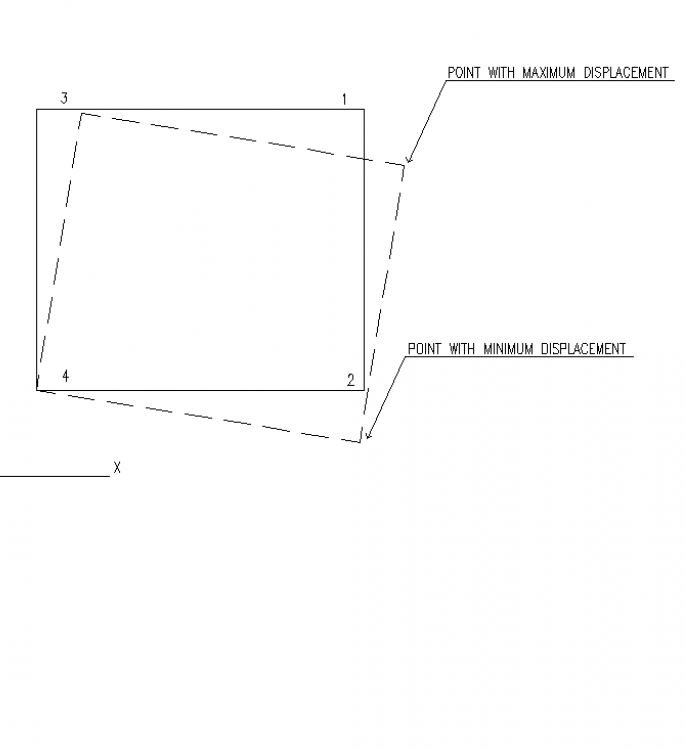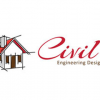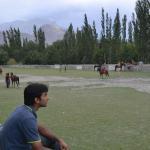Search the Community
Showing results for tags 'torsional irregularity'.
-
Salam , For determining torsional effects in Structure, should we use Story drifts or Story displacements. A lot of videos on youtube are using story displacements while on code Story drifts are mentioned.
-
- 1 reply
-
- torsional irregularity
- etabs
-
(and 1 more)
Tagged with:
-
I am involved in project where I urgently need to have good answers to following questions related to response spectrum analysis for my clear understanding and to assert to client that my approach is right. I am not designing shear walls under RSA load cases but only for static cases. Scale factor between static and dynamic is 3 in X and 2 in Y so the dynamic forces are lot lesser than the static ones. Also I am not amplifying torsion in RSA. And combining orthogonal effects with SRSS approach and not by combinations. 1. Do we need to amplify accidental torsion according to Table M of UBC-97 regardless of seismic zone? In ASCE you need to do it only for SDC C and above. 2. If RSA is done using ETABS (shifting of mass 5%, then determining acceleration at each node, then multiplying tributary mass to get torsional force), then do we still need to amplify RSA eccentricity by Ax (Amplified torsion)? In my understanding you need to only amplify static seismic cases. 3. According to FEMA, UBC-97 and Wilson, there are 2 methods of orthogonal effects. 100% X+30% Y or SRSS. That means I can define a scale factor in U1 and U2 both in the same spectrum load case and select SRSS, instead of defining U1 and U2 (2 separate cases) and then combining them in load combinations. FEMA and Wilson (2004) prefer to use SRSS (100%X and 100% Y to have same strength against earthquake in all directions). 4. Do I need to consider U3 in RSA for vertical direction equal to 2/3 of horizontal or i can ignore it? It is already considered equal to 0.5CaI (UBC-97) or 0.2Sds (ASCE) in static load cases by the way. 5. Do we design shear walls on RSA? Because would'nt it be too conservative (unrealistic) to design huge shear walls just for pure tension instead of tension-compression couple from lateral loads? Because results from RSA are abs (+ or -) but not both. If not then what is the role of RSA in seismic design other than to get the maximum response only to have an idea of total base shear and its distribution. 6. How do we say that dynamic effects are not governing rather static seismic forces are governing? By comparing values of base-shear at each story? Most of the times in regular low seismic zones, dynamic analysis does not govern. What is the meaning of "does not govern"? How do we practically specifically check that in ETABS? By comparing forces as I have said?
-
AoA Members, 1) As per UBC torsional irregularity exists if "Maximum story drift, computed including accidental torsion, at one end of the structure transverse to an axis is more than 1.2 times the average of the story drifts of the two ends of the structure". In our general practice, we compare the ratio of maximum displacement to average displacement with 1.2 to confirm if the torsional irregularity exists or not. But as per the above stated UBC Statement, we should consider the story drift instead of displacement. What could be then the possible reason for considering displacements instead of Story drift? 2) If ratio of Story drifts are to be considered for torsional irregularity check, then In ETABS 2016 there are two types of tables for drifts, one is " Story Max/Avg Drifts" and the other is "Diaphragm Max. / Avg. Drifts"(Pic Attached). Which is to be considered and what is the difference in between story drifts and diaphragm drifts? 3) What does accidental torsion means in the above statement and how it is calculated? Regards
-
What is the difference between Torsional Irregularity and Torsional Stability. Can a structure be torsional irregular yet stable?
-
Hi, I was wondering why in some cases when i want to check torsional irregularity in etabs and use Story Max/Avg Drift from Modal explorer, the software shows both Y and X direction ratio for Earthquake in X direction Or vice versa. as far as i know when checking for EX with plus and minus Eccentricities, it should only report ratios for X direction not Y! i should mention that this happen only in few cases!! in most of the time software report only X direction ratio for EX! thanks in advance for your time.
- 1 reply
-
- torsional irregularity
- etabs
-
(and 1 more)
Tagged with:
-
Assalam o alaikum. I have gone through previous posts regarding this topic but still i m unable to get the exact way to check torsional irregularity. What I have concluded through surfing and conversation regarding this topic with some of forum members, I m posting it with uncertainty that I have get it right or not. Kindly place your valuable comment. I m attaching a simple plan with the deformed floor shape under EQx loading with minimum eccentricity. I have labeled points. If X axis towards right, as marked in picture, For EQx loading with (say) 5% eccentricity, the following shape is gotten. Now UBC97 says, the building will be irregular if "Maximum story drift, computed including accidental torsion, at one end of the structure transverse to an axis is more than 1.2 times the average of the story drifts of the two ends of the structure ." My confusion lies specially in the bold part. Transverse to an axis (What axis) and two end of the structure (when two ends of structure)? Besides the confusion under wording, what i have been guided by other fellows is that, we need to check for EQx, the displacement of Point 1 under EQx drift combos (This will be the maximum displacement) and the displacement of Point 2 under EQx drift combos (This will be the minimum displacement). Then we need to compare the maximum displacement that is of point 1, to the average of this maximum and minimum displacements of point 1 and 2 respectively If this ratio is greater than 1.2, there will be torsional irregularity and if it is greater than 1.4, there will be extreme torsional irregularity. And we need to provide stiff columns or shear walls accordingly to reduce this ratio under 1.2 to eliminate torsional irregularity. Am i getting it right? Thanks.
- 2 replies
-
- torsional irregularity
- table 16-m
-
(and 2 more)
Tagged with:
-
In order to amplify accidental torsion, as per UBC-97 and ASCE 7-05, maximum and average displacements at corners of floor plates must be compared. However, in csi wikki, they use the word "DRIFT" not "DISPLACEMENT", so drifts should be compared instead of displacement. Drift: Difference of displacements at a specific point of upper floor and lower floor Displacement: Abs elastic or in-elastic displacement with reference to base I went through ASCE 7-10 but it was more confusing, as in the text they use word "DRIFT" but in the formulas they talk about "DISPLACEMENT". In FEMA examples, they are sometimes using "Inter-story drift" and sometimes "displacements". Anything I am missing here?
- 3 replies
-
- amplification torison
- torsional irregularity
- (and 1 more)
-
is there any need of shear wall to the top-left side of this building since the elevator shaft is lying at one side of the building and the building will undergo a torsion. if we need to provide shear wall at some other location, please mention it. please clearify, how can i check the torsion of this building in etabs?
-
Dear All, Could anyone suggest me assigning diaphragm like assigned in attached pic is correct for this building. If it is correct then how could we apply torsional irregularity in static load cases (earthquake case eccentricities override). I can calculate and apply it in simple building but in this building there would be two options of diaphragm( D1 & D2) in eccentricity override option in etabs ( If my assigned diaphragms are correct). which one i need to select.
-
I am not getting this statement , that how to check torsional irregularity . Please Help . "Torsional irregularity shall be considered to exist when the maximum story drift, computed including accidental torsion, at one end of the structure transverse to an axis is more than 1.2 times the average of the story drifts of the two ends of the structure. "
-
how much it matters to consider all four possible cases of earthquake, when we have building without any irregularity? because it create a bit problem when you have all four cases and it become quite hectic job to bring building in a stabilizing position for all those cases??? i am solving a structure having 20 stories , and seems to be quite manageable against seismic as two main cores is located at center. but when i go for all four cases, it require extra stiffness at one side of the building in two cases. c2.bmp c.bmp untitled.bmp


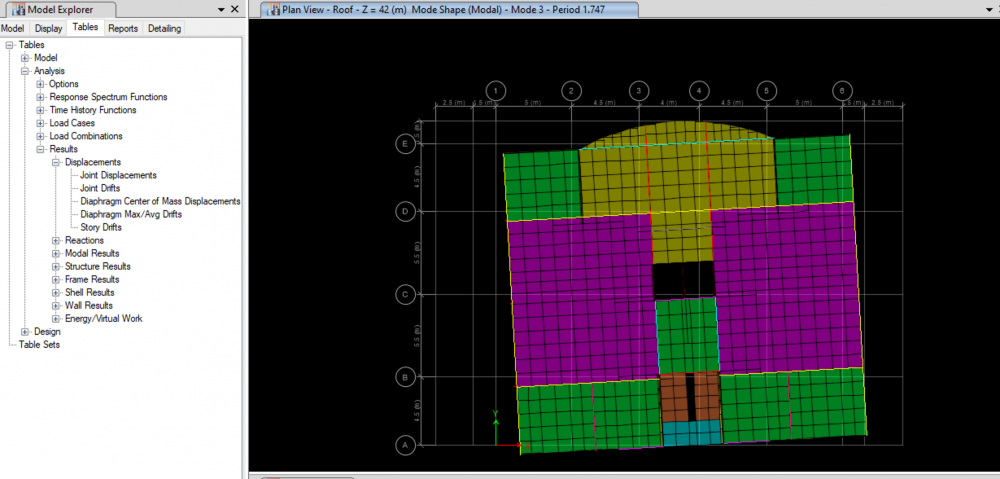



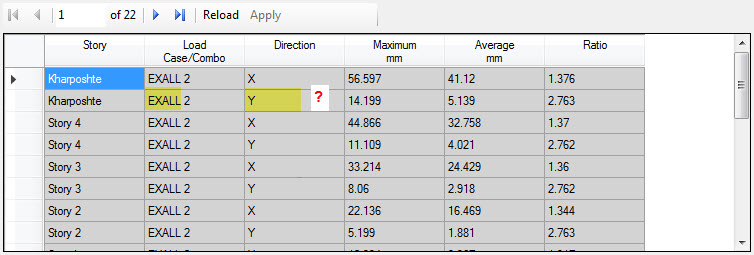
.thumb.jpg.700916fbc7ead330085e15745d0270bd.jpg)
